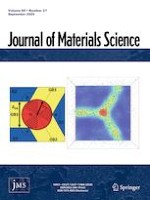16.06.2020 | Energy materials
Effective regeneration of scrapped LiFePO4 material from spent lithium-ion batteries
Erschienen in: Journal of Materials Science | Ausgabe 27/2020
EinloggenAktivieren Sie unsere intelligente Suche, um passende Fachinhalte oder Patente zu finden.
Wählen Sie Textabschnitte aus um mit Künstlicher Intelligenz passenden Patente zu finden. powered by
Markieren Sie Textabschnitte, um KI-gestützt weitere passende Inhalte zu finden. powered by
